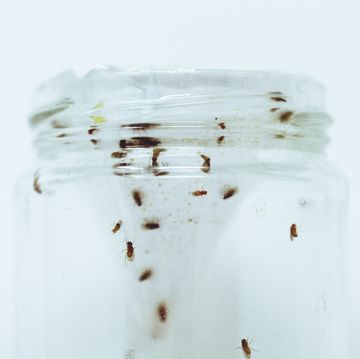1. Be Prepared
"Preparation is key," says Pat Porzio, heating ventilation and air conditioning manager for Russo Brothers Plumbing in East Hanover, NJ. "Cut some blocks out of foam insulation to block off foundation vents leading to crawl spaces and know where your water shutoff is located in case a pipe breaks," Porzio advises. Another item homeowners should have on hand is a temporary patch kit (sold at home centers) to seal off burst pipes as they wait for favorable weather to make a permanent repair or to hire a plumber to sweat in a new length of pipe. "Above all," Porzio says," find out which local plumbers are equipped and ready to handle frozen pipes."
2. Turn Up The Thermostat
If you live in an old house built over an uninsulated crawl space, this isn't the time to worry about your heating bill. Turning up your thermostat will increase the air temperature in the crawlspace by projecting heat energy through the floor into the space. Plan on insulating and air sealing the space.
3. Install Fiberglass
Take a ride to the nearest home center and pick up a package or two of unfaced fiberglass insulation. While you're there, get a set of heavy duty disposable coveralls, a dust mask, work gloves and a package of fresh utility knife blades. Don the protective work wear, load the fresh blades in the knife and assess your insulation needs in the attic, crawl space or other out-of-the-way place installing insulation over poorly-protected pipes. This is one scenario where neatness doesn't count, just get the insulation where it needs to go.
4. Use Foam Board To Insulate Large Areas
Got a really big area to protect? Keep the heat in with a rough-and-ready barrier built with foam board. Faced or unfaced foam board will work, especially if this is a temporary set up. If you've never worked with foam board, it's easy to cut. Mark its surface with a carpenter's pencil or a Sharpie pen. Score to the depth of a utility knife (if need be, score it from both sides) and snap it on the line. Hold it to wood framing with 1-1/4-in or 1-5/8-in. coarse-thread drywall screws.
5. Install A Heating Cable
Install a heat trace cable to keep a cold pipe from freezing. Follow the manufacturer's instructions on the packaging for how to do this. Some heat tapes are wrapped around the pipe, others simply run along it. If you can't find heat trace cable at your local home center, try an electrical supply house. Sometimes this cable is cut to length from a roll, in which case you may have to buy a kit (or separate parts) to convert into a working heat trace cable. In other cases, the cable is sold ready to use, with one end safely terminated and insulated and the other end with an electrical plug.
6. Place A Space Heater
You can keep unprotected pipes above freezing by simply placing an electric heater near them. Remember, the goal is not to make the space toasty warm and comfortable. It's to keep the water in the pipe above freezing.
7. Turn Off The Water
In the worst case, turn off the main water valve while the house is unoccupied or while you sleep. If a pipe freezes and breaks, the spillage is limited only to the water in the pipe.
8. Open Cabinet Doors
It's not unusual for plumbing running to a kitchen sink on an exterior wall to be extremely vulnerable because the wall is not insulated. Open the cabinet doors along that wall to project heat into the space. Place an electric heater in front of the cabinets for an extra measure of cold protection.
This article originally appeared on Popular Mechanics.
-----
Renovation and Remodeling Ideas We Love »
19 Bold Bedroom Before-and-Afters »
Inside an 1830s Farmhouse »
12 Party Decor Crafts Made With Recycled Materials »
6 Pasta Dinners for Less Than $5 »

Roy Berendsohn has worked for more than 25 years at Popular Mechanics, where he has written on carpentry, masonry, painting, plumbing, electrical, woodworking, blacksmithing, welding, lawn care, chainsaw use, and outdoor power equipment. When he’s not working on his own house, he volunteers with Sovereign Grace Church doing home repair for families in rural, suburban and urban locations throughout central and southern New Jersey.












